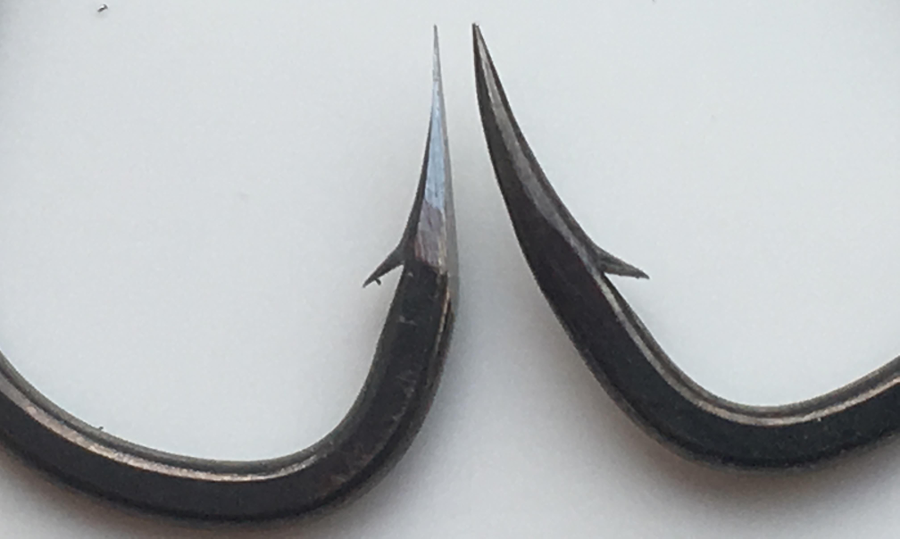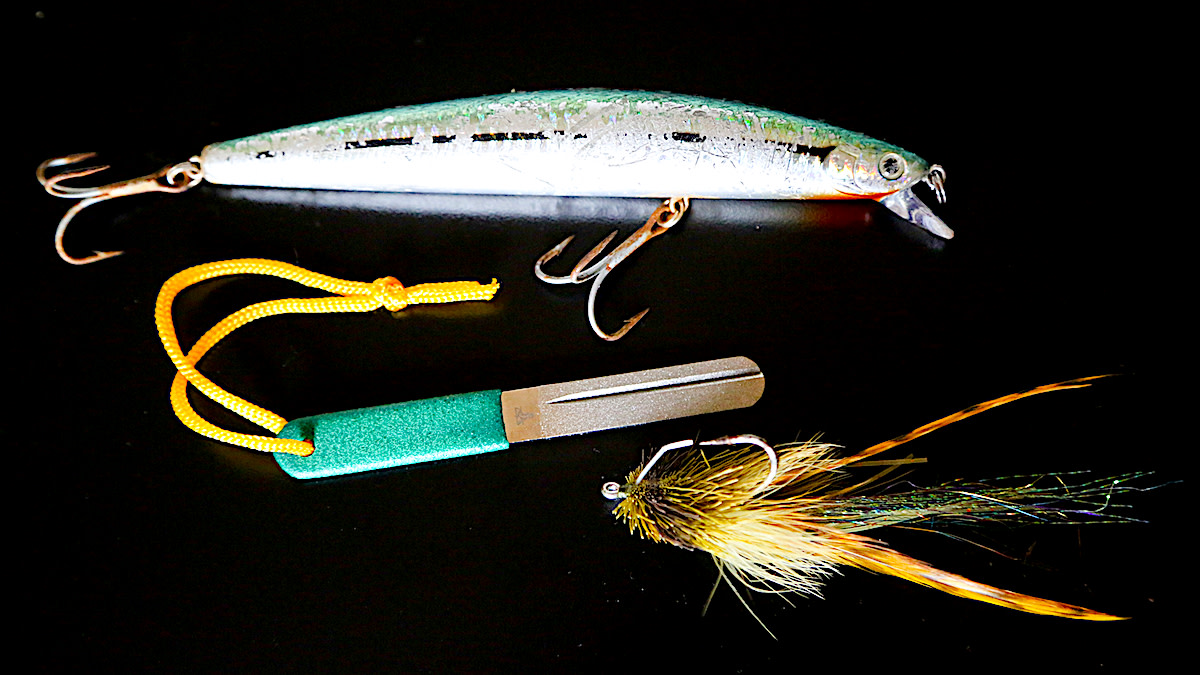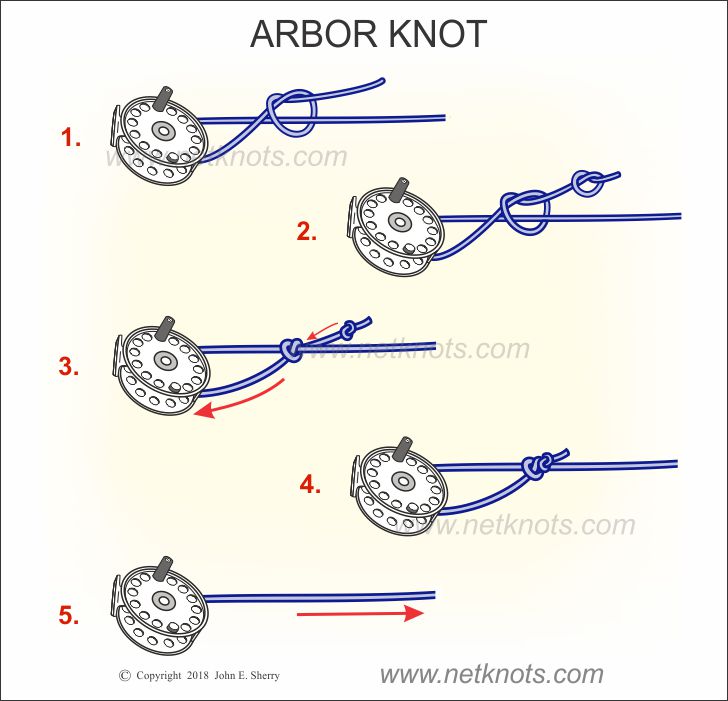How to Sharpen Fish Hooks

Sharpen fish hooks by using a fine file or honing stone in smooth, even strokes. Aim to maintain the original angle of the hook’s point for best results.
Ensuring your fishing hooks are razor-sharp is crucial for successful fishing trips. Dull hooks can lead to missed opportunities and lost catches. Sharp hooks provide better penetration, making it easier to set the hook firmly in the fish’s mouth. A well-maintained hook also enhances the overall fishing experience, allowing for efficient and humane catches.
Keeping your tackle in top condition is not only smart but also a mark of a responsible and effective angler. Whether you’re an experienced fisher or new to the sport, learning to sharpen your fish hooks is an essential skill that will contribute significantly to your success by the water. Remember, the key to a good catch often starts with the sharpness of your hook.

Credit: m.youtube.com
Essential Tools For Sharpening Fish Hooks
Sharp fish hooks ensure a successful fishing trip. Essential tools help maintain that sharpness. To select the right file, focus on a fine-grit option. This allows for smooth, precise sharpening. For specific angles, look to specialized hook sharpeners. These offer more control.
There are alternative tools available if you’re in a pinch. Consider small diamond files or whetstones. They can be just as effective. Always ensure hands are steady. Move the tool, not the hook, to avoid accidents.
| Tool Type | Use |
| File | Precise edge restoration |
| Hook Sharpener | Dedicated anglers’ choice |
| Diamond File | Small, versatile sharpener |
| Whetstone | Classic sharpening method |
Assessing Hook Sharpness
Sharp hooks are important for successful fishing. A dull hook can mean a missed catch. To check sharpness, start with a visual inspection. Look closely at the hook point. It should be fine and pointed. If it’s bent or blunt, it’s time for sharpening.
Moving on, perform a practical test. Gently press the hook against a nail or a piece of soft material. A sharp hook will dig in easily with little pressure. If it slides or struggles to penetrate, sharpening is needed. Remember, safety is key. Handle hooks carefully during inspection to avoid injury.
Step-by-step Sharpening Guide
Sharpening fish hooks is crucial for an effective fishing experience. Begin by securing the hook firmly. This ensures safety and stability during sharpening. Use a vice or a pair of pliers for this step.
Maintaining the proper angle is essential when sharpening. Typically, a 30 to 45-degree angle is recommended against the file or stone. Consistency is key, so keep the angle steady throughout the process.
Stroke technique determines the hook’s sharpness. Use short, smooth strokes moving away from the hook’s point. This achieves a sharp edge without removing too much material. Check sharpness by lightly dragging the hook across your nail. If it catches, it’s sharp.
Pro Tips For Maintaining Sharp Hooks
To maintain sharp hooks, create a consistent sharpening routine. Check the sharpness before and after fishing trips. Use a fine file or sharpening stone gently. Touch the point of the hook carefully to feel its sharpness. Sharpening should follow the original contour of the hook.
Hone hooks in a single direction. Avoid sawing back and forth as this damages them. Only remove minimal metal to preserve the hook’s integrity. Perform light strokes; usually, a few are enough.
- Never store hooks loose in a tackle box.
- Use a hook box with foam inserts to prevent movement.
- Keep them dry; moisture causes rust.
Advanced Techniques And Considerations
Different hook materials require unique sharpening methods. Stainless steel hooks maintain sharpness longer but are tougher to hone. Carbon steel hooks may rust yet are easier to sharpen. Anglers often debate on replacing or sharpening their hooks. Dull hooks lead to missed catches, so timely maintenance is crucial. Regular sharpening can prolong a hook’s life, but overused or damaged hooks need replacing.
Sharp hooks are essential for successful fishing. They ensure a good penetration, increasing the chances of a catch. Small nicks or bends necessitate immediate attention to maintain effectiveness. Use fine files or stones for optimal results. Consider the type of fish and water conditions to decide when to sharpen. Consistent edge care leads to more productive trips and better results.

Credit: www.youtube.com
Safety Measures While Sharpening
Sharpening fish hooks requires attention to safety. Always wear protective gloves to avoid injuries. Eye protection is vital to shield against metal filings. Ensure a first-aid kit is within reach, in case of an accident.
Dispose of old hooks with care. Place them in a hard container. Label it to prevent accidents. Remember to keep hooks away from children and pets. Secure all sharpening tools when not in use. Stay focused to maintain safety at all times.

Credit: www.themeateater.com
Frequently Asked Questions For How To Sharpen Fish Hooks
Should You Sharpen Fish Hooks?
Yes, you should sharpen fish hooks to ensure effective penetration and a secure hook-set, enhancing your chances of catching fish. Sharp hooks contribute to successful fishing trips.
How Do I Keep My Fishing Hooks Sharp?
To maintain sharp fishing hooks, regularly use a fine file or honing stone. Store them dry and separate to prevent dulling. Avoid dragging them on hard surfaces, and inspect and touch them up after each use.
How Do You Hand Sharpen A Hook?
To hand sharpen a hook, secure it in a vise. Use a fine file to gently stroke the barb and point. Follow the original angle, creating a sharp edge with minimal strokes. Check sharpness on a nail, and avoid over-filing to maintain the hook’s strength.
What Is The Best File To Sharpen Hooks?
The best file to sharpen hooks is a small, fine diamond file, designed specifically for precision sharpening of fishhooks.
Conclusion
Sharpening fish hooks ensures a successful catch and respects marine life. Adopting the techniques discussed guarantees your hooks penetrate quickly and securely. Keep them sharp; your fishing expeditions will be more fruitful. Regular maintenance translates to better performance. Now, gear up and enjoy a bountiful harvest from the waters!


